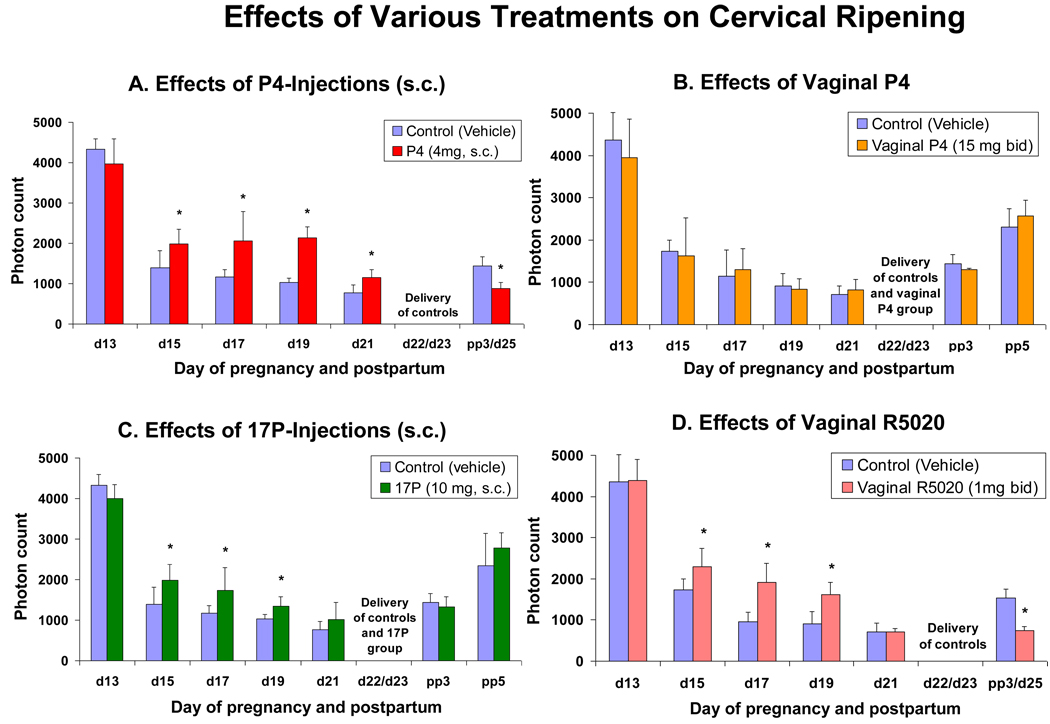Figure 2.
Bar graphs showing means ± SD of cervical light-induced fluorescence (LIF) obtained in vivo from pregnant rats at different days of pregnancy and postpartum (N = 6/ group) treated with various progestins or vehicle. Figure 2A: Daily treatment with vehicle (controls) or P4 (4 mg, s.c.). Note that delivery is inhibited in the treatment group. Figure 2B: Twice a day treatment with vehicle (controls) or vaginal P4 (15 mg bid). Note that no significant differences are observed at any time between controls vs. treated animals. Figure 2C: Treatment daily with vehicle (controls) or 17P (10 mg, s.c.). Note that significant differences are only observed until day 19 of gestation. Figure 2D: Twice a day treatment with vehicle (controls) or vaginal R5020 (1 mg bid). Note that significant differences are observed only until day 19, but delivery is blocked in the treatment group. Asterisks indicate P < 0.05 compared with controls.

